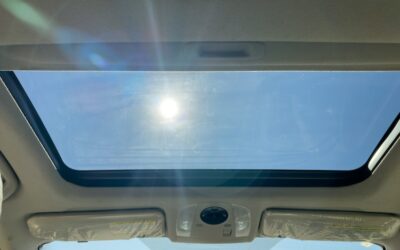There are a few questions about traffic lights that might come up in your theory test. And of course, you’ll also have to deal with traffic lights in your practical test.
So, as a learner driver, it’s a good idea to familiarise yourself with how traffic lights work and with the sort of rules and regulations that might apply to certain situations.
The Traffic Light Sequence
There’s a precise order to the sequence of lights you see on a traffic light. They cycle through four phases, and each phase has its own meaning:
- Red
- Red and Amber
- Green
- Amber
- Repeat
So what exactly does each phase mean?
What does a red light mean?
A red light means STOP. You know this one! Never run a red light. There are serious penalties for doing so, because it places other road users at considerable risk.
When approaching a red light, remember how to stop safely: check your mirrors, brake early, and leave plenty of room between your car and the vehicle in front. If you want to prevent your car from rolling while waiting at a red light, put the handbrake on, put the gearstick in neutral, and take your feet off the pedals.
One other important thing to remember: Stopping at a red light isn’t an opportunity to have a rest. You should still stay focused on the road ahead of you. So this is no time to check your phone or apply makeup.
What does a red and amber light mean?
If you’ve stopped at a set of lights, red and amber means you should prepare to pull away. But you shouldn’t pull off until you see the green light. Don’t let your car creep beyond the white line marking on the road. Instead, get into gear and check all your mirrors so that you’re ready to go from the moment you get the green light.
If you’re approaching a set of red lights and they change to red and amber, you should still slow down. But you might not have to come to a complete stop, as the lights might have changed to green by the time you reach them.
What does a flashing amber light mean?
Traffic lights at pedestrian crossings will usually have a slightly different sequence. Instead of turning red and amber, you’ll instead see a flashing amber light. This means that you can go if it’s safe to do so. But if there are any pedestrians in the road, then you must give them right of way.
What does a green light mean?
Green means GO. Again, you should know this one! If you’ve stopped at the lights, once they change from red and amber to green, then it’s finally time to pull off. Just pay attention to any vehicles ahead of you – don’t try and pull off until they’re also moving – and look out for any bikers or cyclists around you.
Some traffic lights have green lights shaped like arrows. These are called “filter lights”. When a green filter light shows, you can move in the direction it indicates regardless of which other lights are showing. So if you see a red light with a green filter light pointing right, it’s safe to move right.
Amber
If you just see an amber light on a traffic light, it means it’s no longer green, and it’s about to turn red. This means that you should stop – but only if it’s safe to do so.
The Highway Code says that you should always stop at an amber light unless you’ve already crossed the white line at the junction, or you’re so close to the line that stopping could cause an accident.
Never treat an amber light as a sign that you should speed up before the lights turn red.
Even if you’re approaching green lights, you should anticipate them changing at a moment’s notice. So check your mirrors and make sure that you’re not too close to any other vehicles, either ahead of you or behind you. That way, if you do need to come to a quick stop, you can do so as safely as possible.
Traffic Lights – Special Rules and Regulations
Here’s a few more things you should familiarise yourself with:
What to do if an emergency vehicle comes up behind you while you’re at a red traffic light
You have to do all you can to let the emergency vehicle pass, but you must not drive through red lights. This is because driving through red lights invariably puts other road users at risk. Instead, you should wait for the lights to change before you take appropriate action to let the emergency vehicle pass.
What to do at temporary traffic lights
These work in exactly the same way as regular traffic lights. The only difference is that there won’t be a solid white line on the road to stop behind. Not all temporary traffic lights operate round the clock. There should be a sign near the lights indicating when they’re operational. So if there’s no signal showing, and it’s outside of the lights’ operating hours, then you can simply pass through.
What to do at broken traffic lights
If a set of traffic lights is out of order, there should be a sign nearby to let you know. The important thing to remember is that no road user has priority when traffic lights are broken, so you need to take extra care. Before you enter the junction, check all directions for oncoming traffic. Only proceed once you’re certain it’s safe to do so.
Are You Ready For Your Test?
If you want to pass your driving test first time, it’s important to be prepared. And there’s no better way to prepare for your test than through getting in as much practice as possible behind the wheel.
But if you want to drive outside your lessons, you’ll need to sort out your own learner car insurance.
At Go Girl, we offer flexible learner driver insurance policies. If you have any questions, or if you’d like a quote, don’t hesitate to get in touch. We’ll help you to get on the road to becoming a safe, confident and covered driver.




